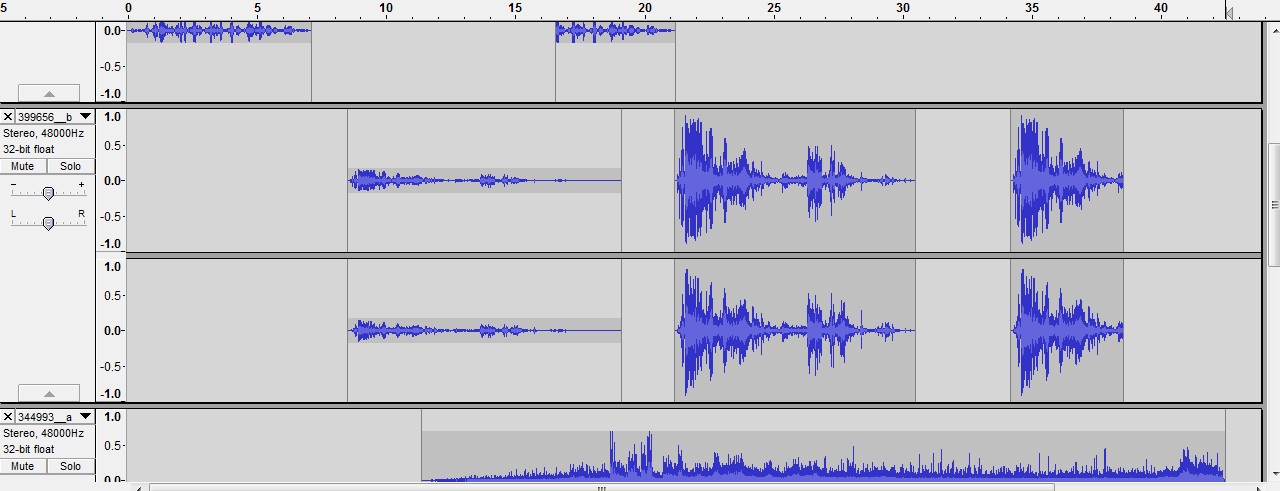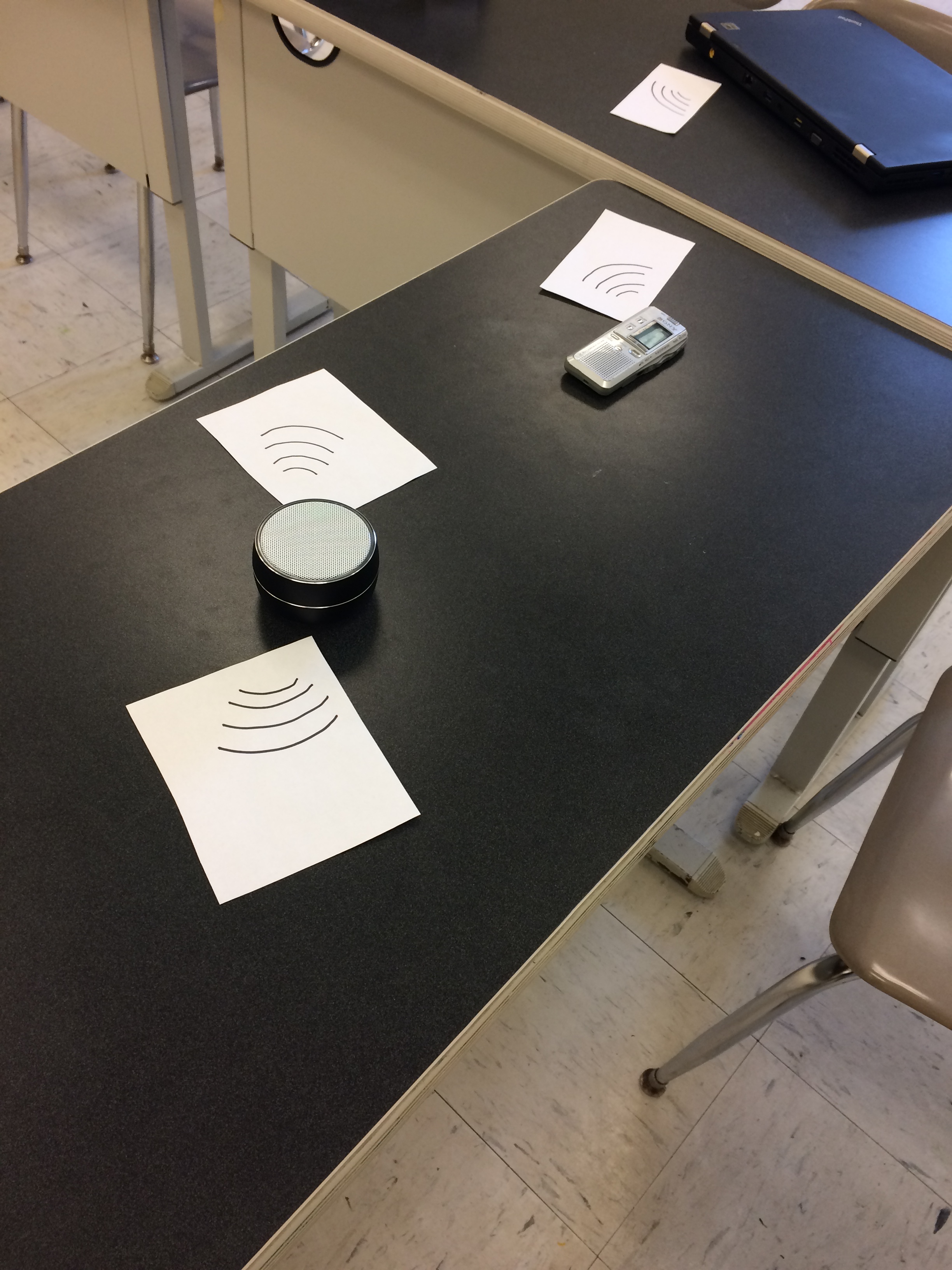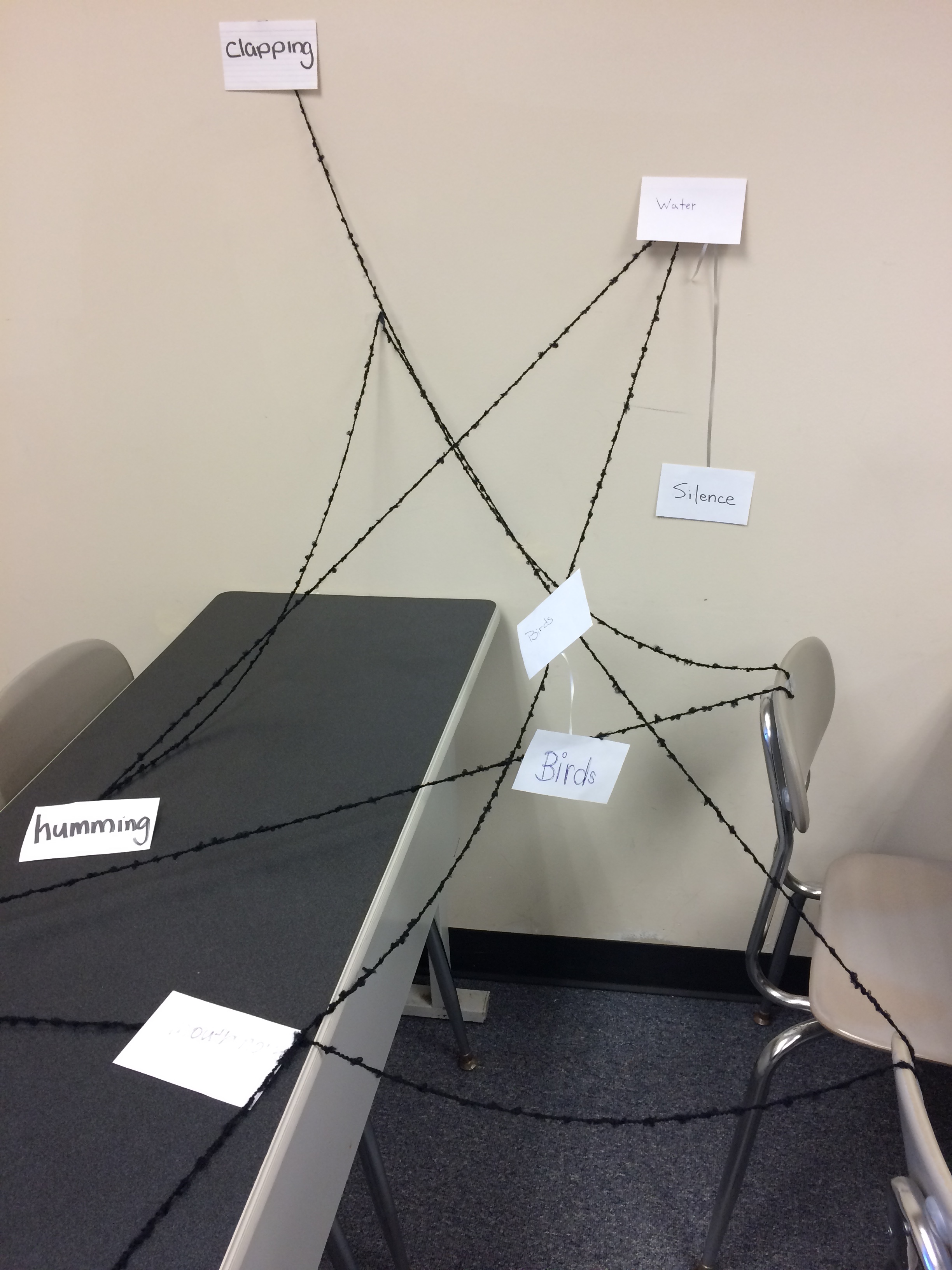Soundscapes: Rhetorical Entwinements for Composing Sound in Four Dimensions

3. Challenges for Soundscape Design Pedagogy
Although the pedagogical opportunities for soundscape design may be compelling, so too are some of the most common objections to including soundscape design within rhetoric and composition courses. First, because many consider soundscapes as solely existing in a sonic dimension, there is often an objection to the ways soundscape design may reaffirm ableism or exclude participants and/or designers. Another common objection to soundscape design is the issue of technological access (in both a material sense and the sense of access to technological literacies related to sound design, recording, and editing). Third, a common objection to soundscape design pedagogy has to do with notions of purpose and traditionalism. This last objection may be related to the idea that the work of designing, composing, or intervening in a soundscape is better reserved for special-topics courses in sound and is not appropriate given the various purposes and learning goals already present in "traditional" approaches to composition. (In some ways this argument may also draw on the "back to basics" argument that perceives multimodal and digital literacies as areas to be encountered only after a student has "mastered the basics" of traditional, print literacies.) While not all of these objections are equal and some may involve overlapping issues, I will briefly consider each.
In some ways, it is perhaps the notion of space and spatialization that presents the largest barrier to offering students experiences with soundscape design. (By spatialization, I mean to indicate the static location of sounds or sound sources within the place of a soundscape, but also the creation of relationships among sounds and their space, such as the perception of perspective or movement.) Issues of the space of a given soundscape and spatialization of sound are arguably the most significant in distinguishing soundscape design from other sonic assignments. In all cases, the spatial dimension of soundscape design requires instructors to work against ableism, consider technological access (in terms of both material form and literacy), and respond to questions about pedagogical purpose. However, I will argue that these are requirements that can be met while offering substantive opportunities to teach students complex, adaptive rhetorical skills.
Ableism
The desire to promote inclusion and engagement and to reject ableism within our classes is one of the most important reasons why instructors may object to soundscape assignments. While it is true that soundscape design and composition may first seem to take place solely through the sonic realm, soundscape assignments and the design and instantiation process for soundscapes can take many forms. Additionally, even among students with relatively similar physiological listening abilities, there should not be an assumption that all participants, designers, or composers of a soundscape experience listening or draw on listening practices in the same way.
In her article "(Re)Educating the Senses: Multimodal Listening, Bodily Learning, and the Composition of Sonic Experiences," Ceraso (2014) rejected the notion of listening as one that is solely within the purview of "the ear." In her introduction, she noted that "identifying the ear as the body part that enables listening does not capture all that is involved in experiencing a sonic event. Listening is a multisensory act" (p. 102). Further, Ceraso discussed Evelyn Glennie, a deaf musician who not only experiences music in richly complex ways but also creates music: "Glennie's listening practices exemplify how touch, sight, and sound work together during sonic interactions, making explicit the multimodal aspects of listening that most people take for granted. For Glennie, listening is a practice that is grounded in the body" (p. 107).
Rather than avoiding soundscape design because of a perception that it promotes ableism, we must remember that soundscape design necessitates considerations of embodiment and universal design that should take place in any pedagogy. In fact, as Ceraso (2014) noted in her argument that listening is multimodal, we should not assume that all listening experiences are the same or that ears are the only mediator of sound. For all our students who may experience a range of hearing abilities and listening practices, soundscape assignments and experiences with soundscape design should offer multiple means of engagement that draw on tactile, haptic, and even visual modes of soundscape design along with the sonic. For instance, consider the following two scenarios:
Scenario #1: A student composes linear "tracks" with multiple layers of arranged sound to be played from multiple sound sources throughout a given space. In this scenario, the act of composing may involve such digital means as using a sound-editing program like Audacity to arrange sounds in time across multiple, layered tracks. These tracks would then be exported to a single file, and different files could be uploaded and played from laptops or other sound sources arranged at specified points and volumes in a room. Other participants in the class could choose different locations for experiencing the soundscape. Students receive feedback from the embodied experiences of listeners/participants in the soundscape, and revision may take place over any length of time.


Scenario #2: Students assemble as a group to plan and create sounds by "hand" using bodies, instruments, and/or foley sounds (e.g., using physical props to create the sound of other sources, like the click of a pen cap for a person walking in high heels). They distribute and coordinate written or oral plans about dynamics, rhythm/tempo, source type, and ways of unfolding different sounds in time and space. They may create visual maps or physical models. A coordinating listener may move about the room asking people to change their location or modify dimensions of their sound source(s). Revision takes place in situ and soundscape designers are both participants and listeners.

Neither of these scenarios is better or "more authentic" in offering opportunities for soundscape design. Furthermore, there are numerous other variables that may be employed within a given soundscape composing experience. Soundscape composing might be individual, collaborative, digital, physical, or much more fully multimodal. Ceraso (2014) not only noted that listening itself is multimodal, but that multiple modes or channels may be used to provide additional experiences of a soundscape, such as by annotating a space with sound markers and sound descriptions through digital, physical, or hybrid means. For example, Post-it notes can be used to visually locate sounds or sound sources in space along with descriptions. Alternatively, digital mapping can allow composers to annotate spaces. Also, ribbon or string can be used to visually represent unfoldings in time at a particular source or in creating a track such that pulling along a string visually shows the sequence of sounds playing from a particular source.

Technological Access
Another serious barrier to soundscape pedagogy is the issue of technological access and technological literacies. While sound-editing software like Audacity is freely available to download and some sound archives, like Freesound.org, offer sound files to be downloaded and used for free, these scenarios presuppose access to computers with reliable connections to the internet and administrative rights for downloading software programs. Unfortunately, as we continue to see in research into the digital divide, while gaps in access to computers and the internet are narrowing, not all students have such access (Bancroft, 2016, p. 47). Even in the case of relatively financially stable colleges and universities, we continue to see a shrinking of computer lab space, which puts the onus on students to have and maintain devices appropriate to digital sonic composition.
Additionally, for some the question of access is not so much material but instead involves access to skills, past experiences, and literacies involved in sonic composition. For instance, as music education experiences in K–12 are threatened, fewer students may have access to vocabulary for talking about sound. Moreover, even those who may be quite comfortable talking about tempo, pitch, dynamics, and even key signature, suspension, and harmonics, may think that they lack the functional literacy to import WAV files into Audacity.
Finally, even when students possess the material access and literacies necessary for working with sound-editing software in the design of soundscapes, they may very well prefer not to. J. Elizabeth Clark (2010) cited Ellen Evans and Jeanne Po's findings that students do not always desire to work with digital texts, and that "because millennial students have not been exposed to digital texts as a part of their education, they are resistant to digital texts as part of the curriculum; in short, they do not know how to approach these texts critically or analytically in an academic context" (p. 32). Students' resistance to composing new forms of texts, particularly digital texts, goes back to a previous argument regarding Anne Frances Wysocki's (2005) concept of "unavailable designs." Sometimes it is not enough for instructors to make a more expansive set of design choices available if student resistance or student access to those associated literacies continues to make them unavailable. This is to say nothing so far about instructor compensation for taking risks in assigning work with new technologies and/or modes of expression. (These risks could involve personal expenditures of time, money, and energy and professional risks in the form of lower teaching evaluations.)
However, I argue that these are also not insurmountable challenges. A composition pedagogy involving soundscape design need not take one form. For instance, some student populations have high percentages of mobile device saturation. Sound archives such as Freesound.org and even YouTube often allow students to stream and play sounds without the need to download and save files to a device. Also, in the case of unreliable internet connections or no access to the internet, a range of sounds can be made and recorded via phones, and there is no requirement that soundscapes exist beyond embodied performances. Students themselves can engage in complex acts of soundscape design and instantiation that are not archivable in that students themselves are acting as sound sources. In scenario #2 above, students may make sounds using their hands, mouths, feet, prepared instruments assembled with tissue boxes, rubber bands, plastic bags, books, and vegetables and so forth. Even the single sound, visual event, and physical act of clapping hands can be made in strikingly different ways depending on volume, tempo, rhythm, placement, and the timbre of different hands. The needs of the assignment and the purpose underlying the soundscape pedagogy should be the determining factors. Also, as with most pedagogical choices, there should be multiple options and opportunities for engagement that allow students and instructors to navigate issues of technology and access. Finally, in the same way that low-stakes assignments and activities prompt students to explore unfamiliar ways of knowing and composing in other realms, it is possible to incorporate soundscape design into a course via low-stakes exploratory assignments.
Purpose
Since purpose should be the determining factor of any sound pedagogy, we must consider the connections that soundscape pedagogy has to the overarching goals of a course. While soundscape design may feel quite far afield from the learning goals of a first-year composition or introductory rhetoric course, soundscape design actually offers a means to concretize many "traditional" aspects of written expression. Assignments in soundscape design should not be reserved for sound studies or soundwriting courses alone. The possibilities of soundscape design need not be perceived as additive or "next," but actually offer different possibilities for exploring traditional rhetorical concepts.
However, these possibilities come from a heightened sense of purpose. Students are not well-served by soundscape design assignments simply included under the umbrella of "student engagement" or under the assumption that younger college students, assumed to be digital natives, will find such assignments "fun." In fact, as noted above by Clark (2010), students can often be the harshest judges of what they perceive as essential to their learning, and even younger generations of students can be quite traditional in their perceptions about what it means to compose. Therefore, the needs of a course and student population must be carefully considered when designing any given soundscape assignment. But, as I argue in the remainder of this chapter, I believe it is possible to construct meaningful opportunities for soundscape design given the "rhetorical entwinements" that soundscape design has among four dimensions.